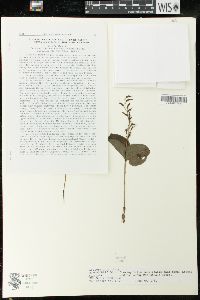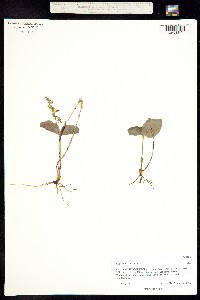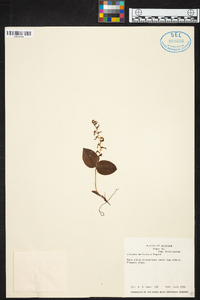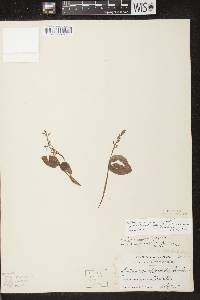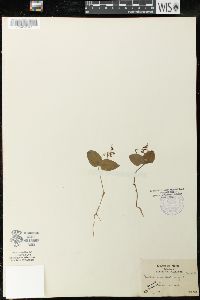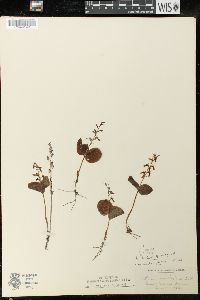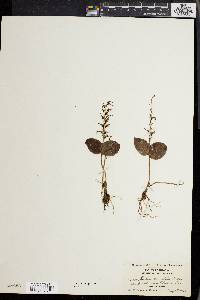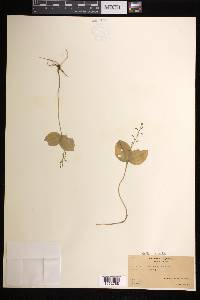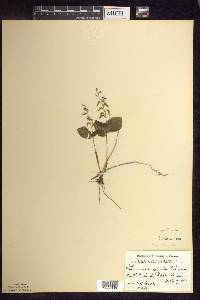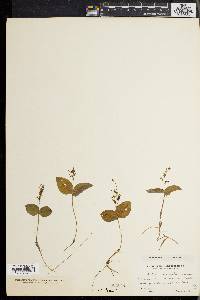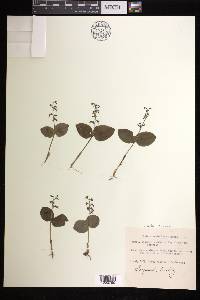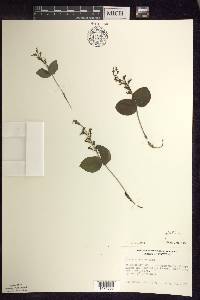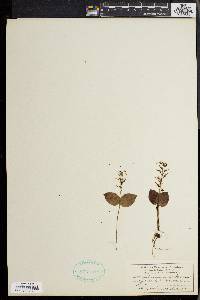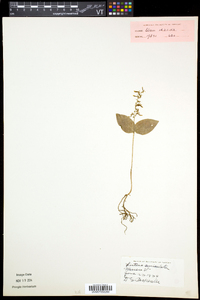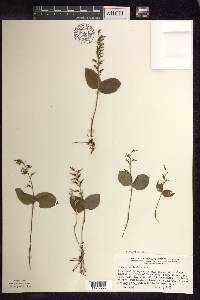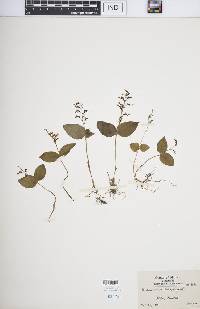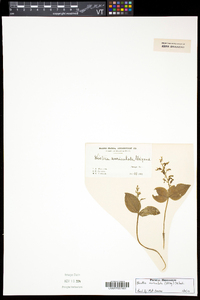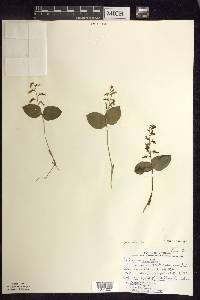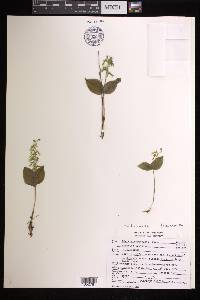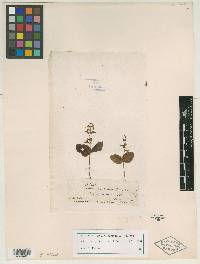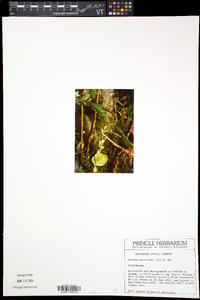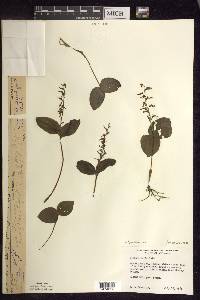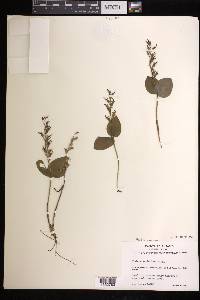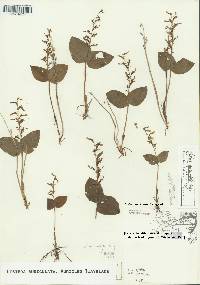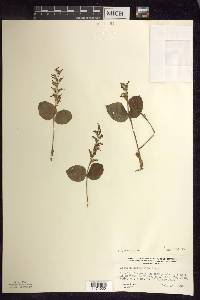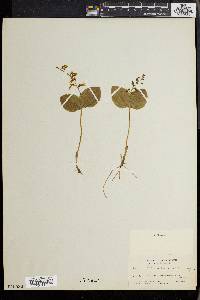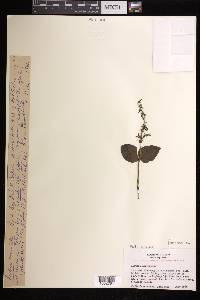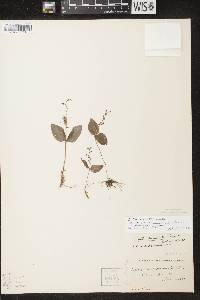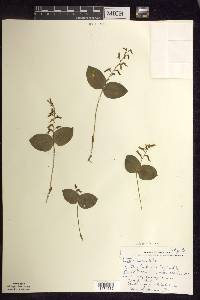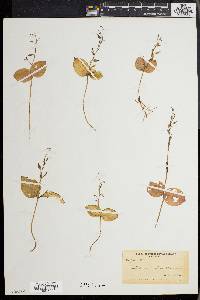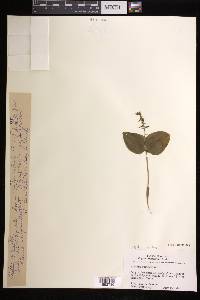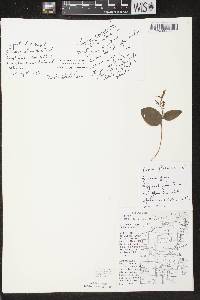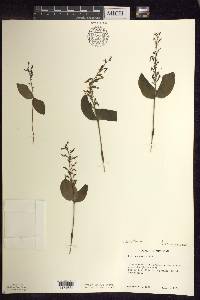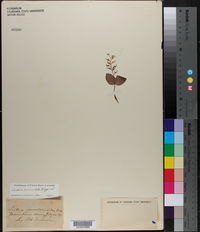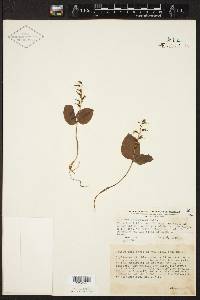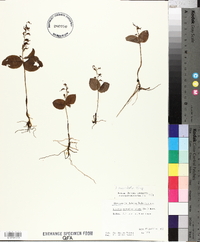Listera auriculata
|
|
|
|
Family: Orchidaceae
Auricled Twayblade
[Neottia auriculata (Wiegand) Szlach.] |
Plants 5-25 cm. Stems pale green, succulent, glabrous. Leaves: blade pale green, suborbiculate to suborbiculate-ovate or elliptic-ovate, 2.5-6 × 1.5-4.2 cm, apex subobtuse. Inflorescences 5-20-flowered, lax, 20-100 mm; floral bracts broadly elliptic to oblong-lanceolate, 2-7 × 1-2 mm, apex obtuse; peduncle and rachis densely glandular-puberulent; bracts, pedicel, and ovary glabrous to rarely glabrate. Flowers pale green to blue-green, fading whitish with age; pedicels stout, 2.5-5 mm, glabrous, rarely glabrate; sepals and petals reflexed away from column and lip; dorsal sepal elliptic-obovate, 3-3.5 × 1.5-2 mm, apex subobtuse; lateral sepals elliptic, oblong, or ovate-lanceolate, strongly falcate, 3-4 × 1-1.5 mm, apex subobtuse to acute; petals linear-oblong to linear, falcate, 3-3.7 × 0.8 mm, apex obtuse; lip obovate to oblong, base of lip with auricles curving around and clasping base of column, apex slightly expanded, cleft approximately 1/5-1/3 its length, forming 2 broadly rounded lobes, margins ciliate; disc 3-veined with lateral veins branched, base with ridge in center; column arcuate, 2.5-3.3 × 1 mm, dilated at distal end. Capsules horizontal to semi-erect, ellipsoid, 8 × 4 mm. Flowering late Jun--Aug. Alluvial soils in low, moist, hardwood forests or mixed hardwood-coniferous forests, shrub swamps, sphagnum bogs; requires soil that remains cool throughout summer, with high degree of acidity; 0--1000 m; Man., N.B., Nfld. and Labr., N.S., Ont., P.E.I., Que.; Maine, Mich., Minn., N.H., N.Y., Vt., Wis. Listera × veltmanii flowers in July and August. Its habitat is intermediate between those typical of the parents and apparently is often disturbed; 500--800 m. It is known from New Brunswick, Newfoundland and Labrador, Quebec, Ontario, Michigan, and Wisconsin.
Stem 1-2.5 dm; lvs ovate or round-ovate, 2-5 cm, longer than the peduncle, broadly rounded at base, obtuse or subacute; axis glandular; pedicels and ovary glabrous; bracts 2 mm; fls up to ca 20; sep and lateral pet lance-ovate to oblong, 3-4.5 mm; lip pale green, oblong in outline, 6-11 mm, maintaining its width to the rounded base and there bearing a pair of minute retrorse auricles, slightly constricted at the middle, cleft at the summit for about a fourth its length; column 2.5-3 mm. Wet woods and thickets; Nf. and Que. to N.H. and N.Y.; Isle Royale, Mich. July, Aug. (Ophrys a.) Gleason, Henry A. & Cronquist, Arthur J. 1991. Manual of vascular plants of northeastern United States and adjacent Canada. lxxv + 910 pp. ©The New York Botanical Garden. All rights reserved. Used by permission. |

